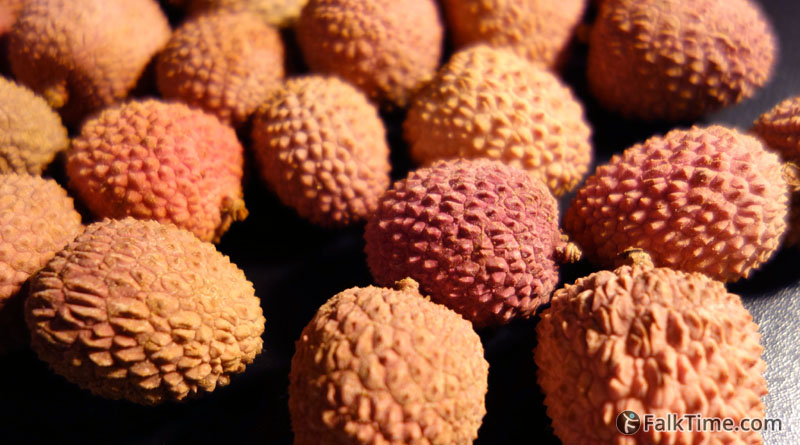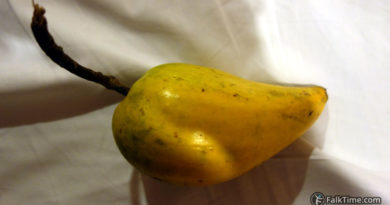Lychee (ลิ้นจี่)
(Litchi chinensis)
Lychee is native to Southern China and it is very popular in South-East Asia. Lychee has 2 “relatives” in its Soapberry family – longan & rambutan. All these fruits taste different though they have the similar structure. Lychee is the most flavorful and juicy from these 3 species.
Ripe lychees are exported to a wide range of countries. Even in some Russian cities they can be found for a reasonable price, 50-100 THB/kg (usually these are lychees from Madagascar in beginning of January).
Taste of lychee
Lychee has distinct bright taste that is perfectly balanced – sweet and a bit sour. The flesh is tender and very juicy, the consistence reminds of grapes or jelly. It’s hard to compare the taste of lychee with other fruits, it’s too different. Some say that they feel a pinch of grapes, strawberry and sweet wine.
Lychee has strong pleasant smell. It seems that somebody sprayed its flesh with fruity perfume. The best option to have pleasant smell in a fridge – is to put a bunch of ripe lychees there.
There are different kinds of lychee – the length of fruit can be 2-6 cm.; the colour of the peel varies from dark red to dirty pink red; protuberances on its skin may be more or less sharp. All lychees have similar taste.
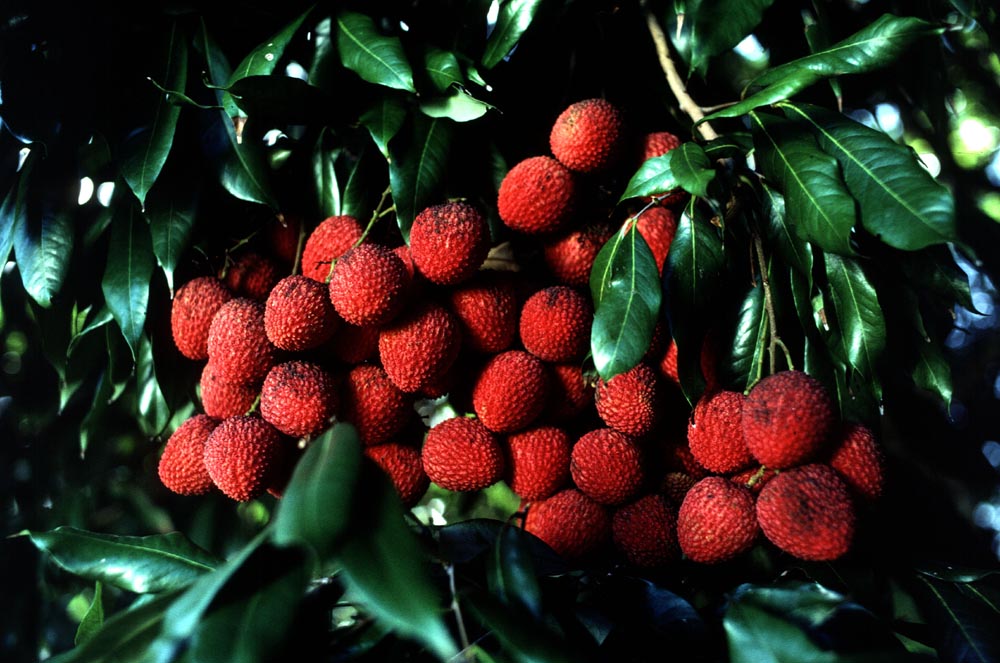
How to choose, transport & store
The more red is the rind, the riper is lychee. If you see 1-2 fruit with mold – all the lychees next to it can’t be stored. This advice fits more exported lychees, rather than fruit sold in Thailand (these are generally fresh).
To make lychees stay fresh longer, Thais sell them in bunches.
The skin of fresh lychee should be a bit flexible, if it is hard as the shell of an egg – avoid buying these lychees, it will be difficult to peel them. Also avoid brown (exported) lychees – it means that they were stored for a long time in wrong conditions.
Tough skin protects fruit, but one should not squeeze them too much. If one wants to bring some lychees back home, one should use a suitcase or put them in hand luggage. Otherwise everything will be covered in sweet juice.
Lychee can be stored in a fridge even for a month. Plastic bag is a must and one should regularly check, if there’s any mold or if some begin to dry out. First touches of mold are not a big problem – usually it covers only the upper layer of skin, while drying out brings unpleasant flavor.
How to eat lychee
First of all one should peel a lychee (like a tangerine). It’s convenient to start from peduncle. Then lychee should be eaten like a plum (in Russia the second name for lychee is “Chinese plum”). One should eat only transparent-white aril. Big seed is inedible.
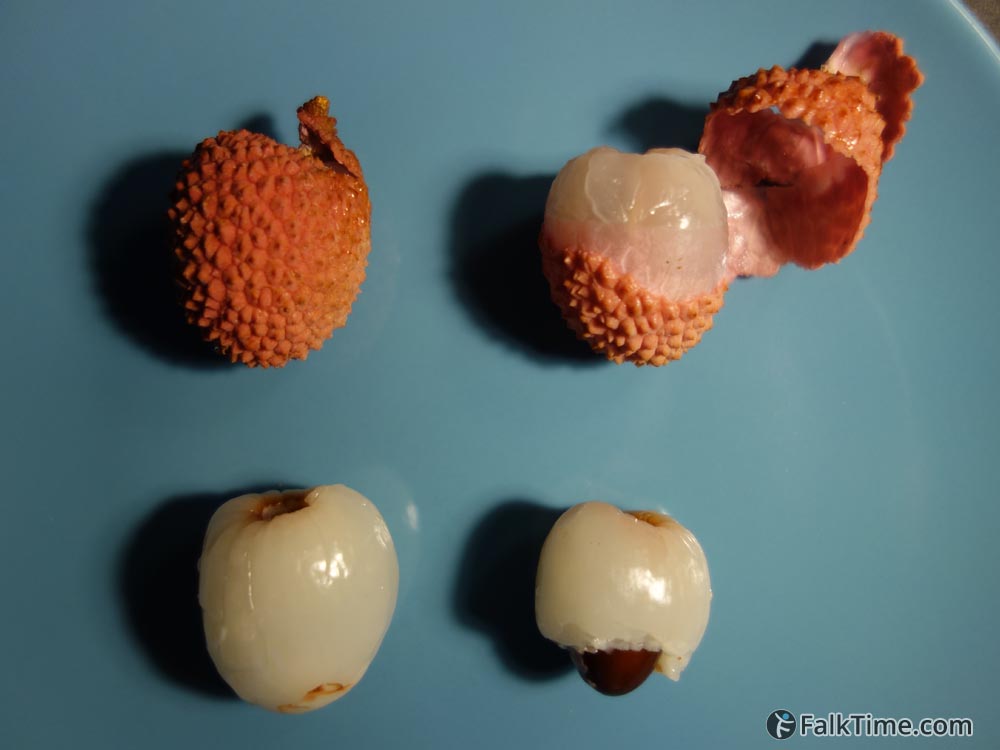
Eating lychee is a messy thing; at least your hands will be covered with sweet juice. One should rather eat lychee next to any source of water (in room or at the beach). I prefer to peel lychee in a sink, as its juice sprinkles around.
Avoid eating seeds and many unripe lychees: it can lead even healthy people to hypoglycemic coma.
In addition unripe lychees are sour, a little bit astringent and with a lack of that nice aroma.
If you want to decorate a table with a fruit basket, remember to eat all lychees the same day. Otherwise their skin will turn into a crispy shell that is difficult to peel off. Pieces of the shell injure tender arils, a lot of juice leaks, a lot of time wasted.
Lychee is also widely used in cooking purposes:
- Preserved fruit tastes good, though it differs from the fresh one.
- There are various drinks based on lychee, starting from juice and tea with its flavour and ending with Chinese sweet wine made of lychee.
- Lychee is used as natural aroma for many desserts like jelly, ice-cream, candies or marshmallows (the same way we use strawberry).
When and where to buy
The season for lychee in Thailand is from April to August, fruit are sold almost everywhere, even peeled. The price starts from 25 THB per 1 kg. Size and quality affects the price.
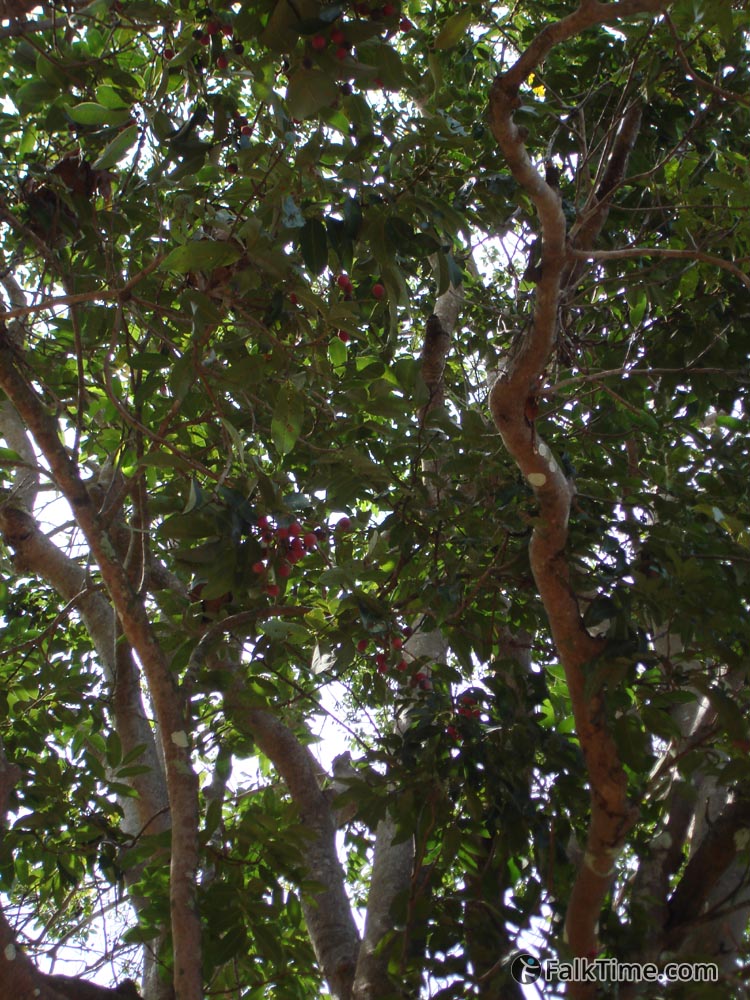
Source of picture without the watermark – Wikipedia, author – Barry Fitzgerald, USDA.

